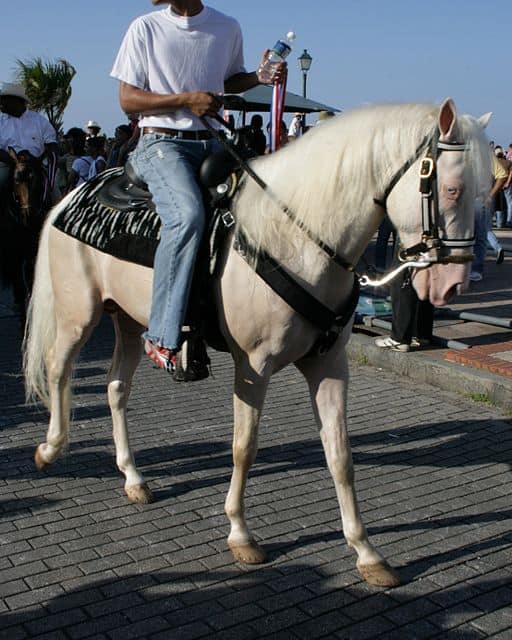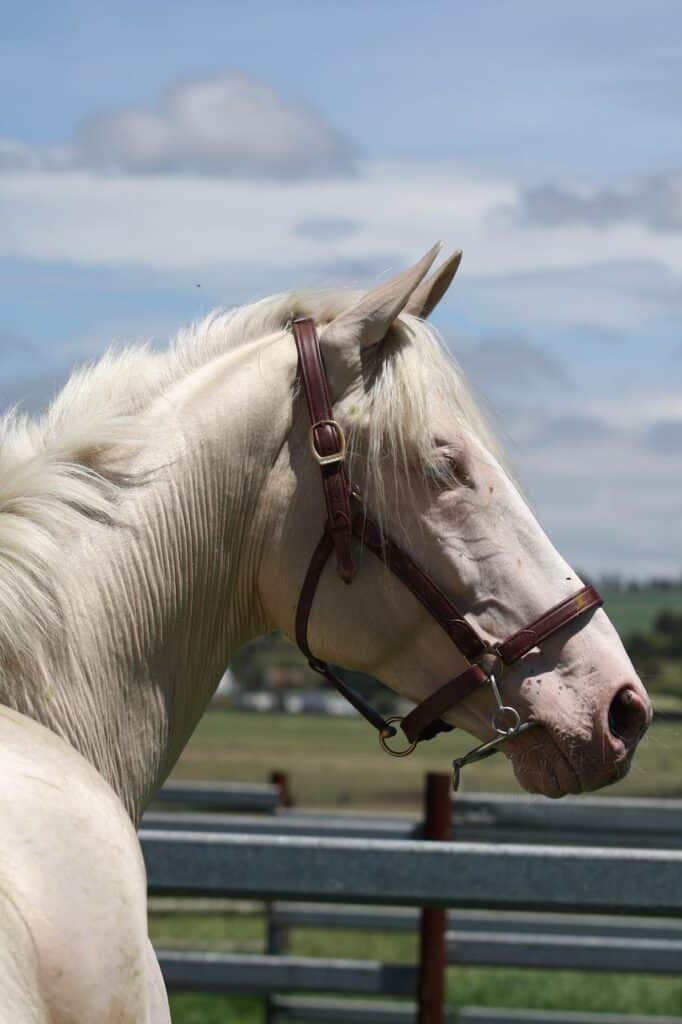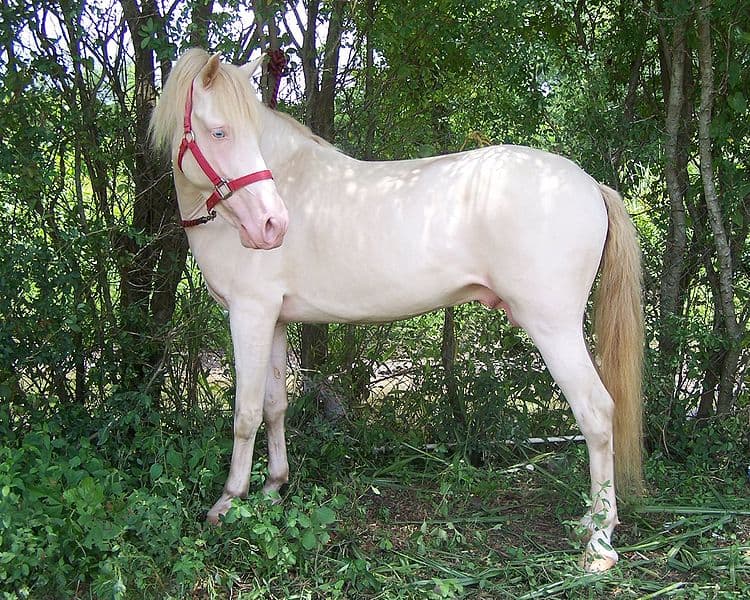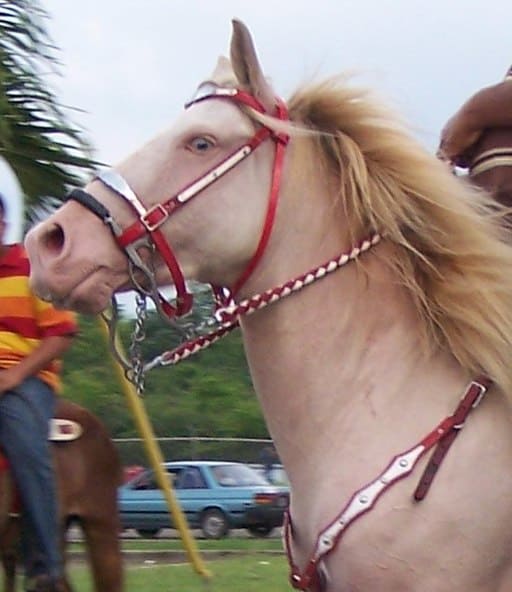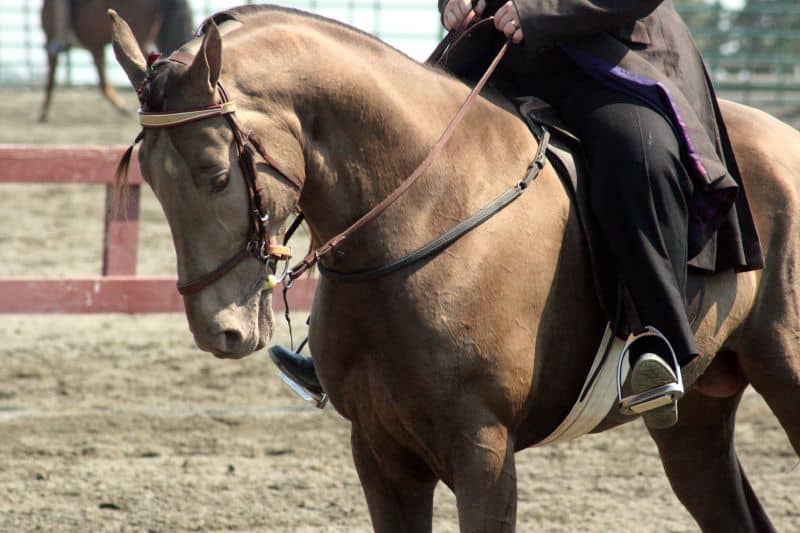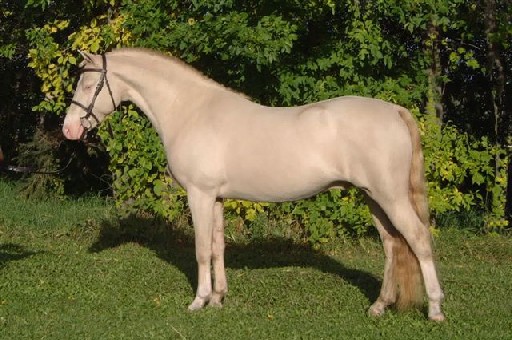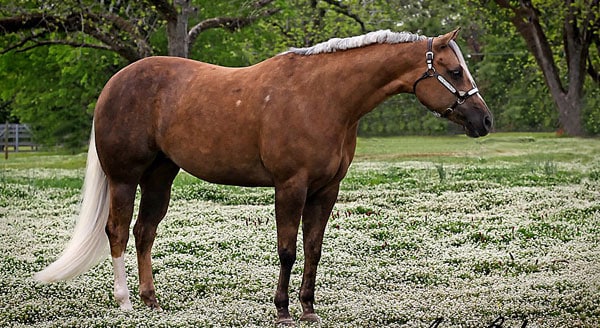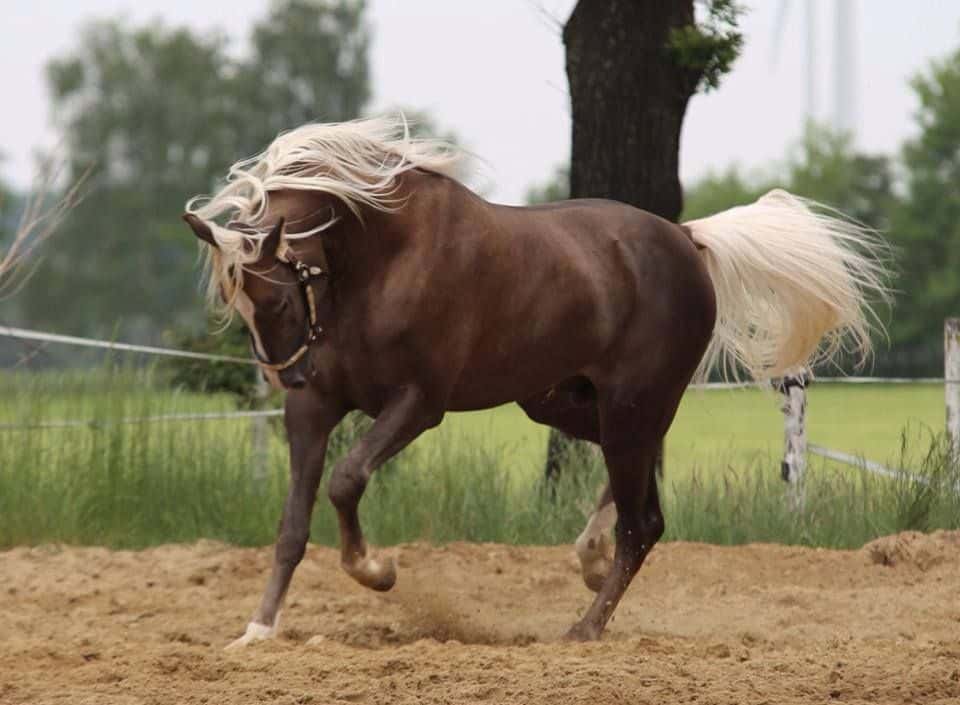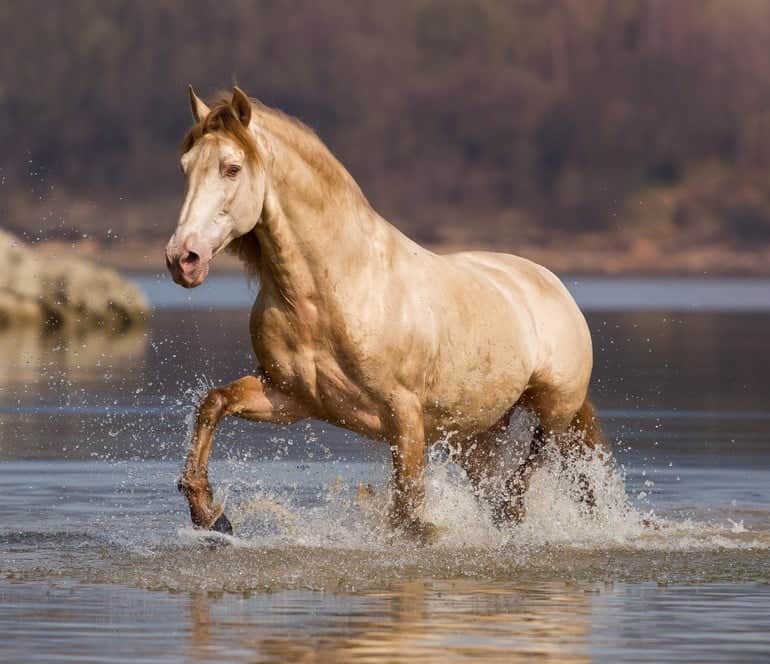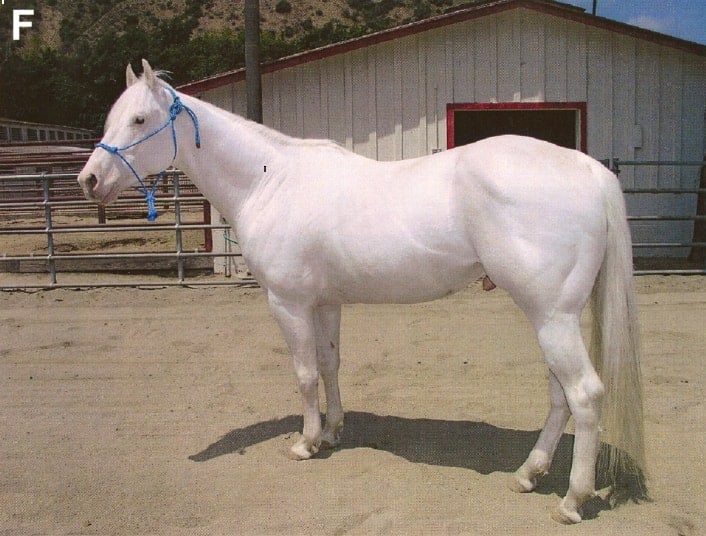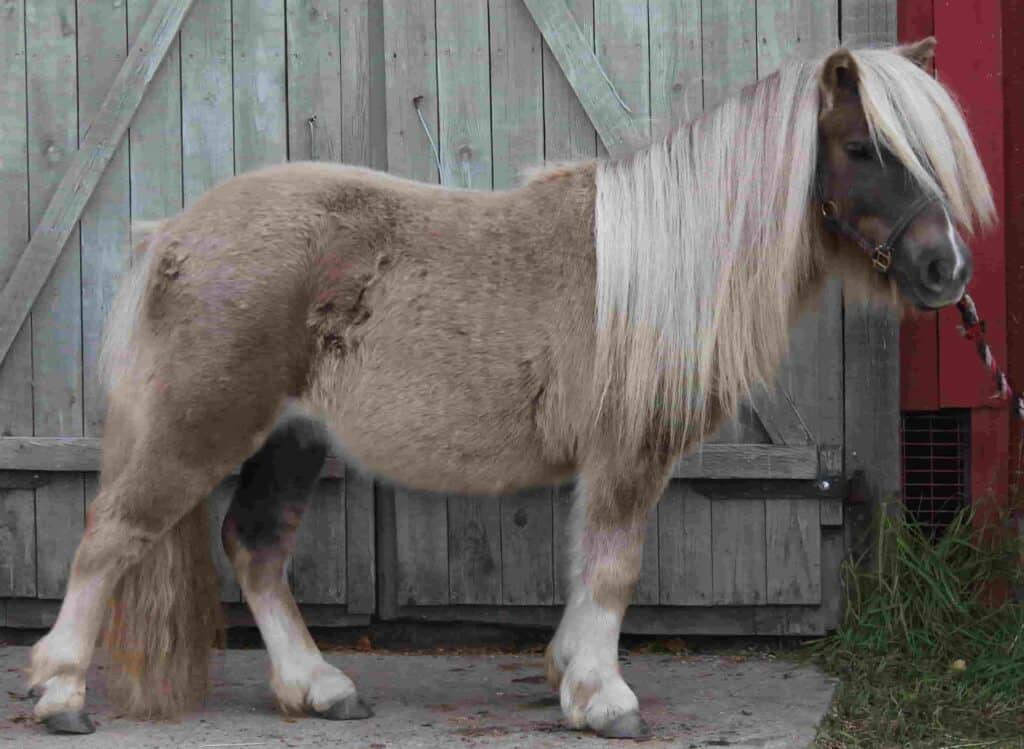Horses are one of the most gorgeous creatures on earth. They symbolize endurance, freedom, valor, majesty, and spirit. They look beautiful almost in all the colors; however, some colors are rarer than others.
Horse hairs have two primary pigment colors, red and black. These two pigments cause 3 coat base colors in horses: black, chestnut, and bay. Black is fully black, chestnut is fully red or, to be more specific reddish-brown, and bay is a combination of both black and red hair.
All the other horse colors are caused by color dilution genes such as cream dilution, silver dapple, dun, mushroom, champagne and others. Remember, the color of a horse doesn’t depend on its breed. The genetic makeup determines the hair color, and technically any breed can be of any color. However, some breeds are more likely to have certain colors due to selective breeding.
Here we list 9 of the rarest horse colors that you can find around the world. Some of them are so rare that, chances are, you will never get to see one unless you really try hard.
- Cremello
- Perlino
- Champagne
- Brindle
- Smoky cream
- Chocolate palomino
- Pearl
- White
- Mushroom
Base coat color: Chestnut
Skin color: Light pink
Eye color: Blue

photo source: commons.wikimedia.org
photo source: pixabay.com
Cremello horses have a cream-colored coat and light blue eyes. Their tails and manes are either white or cream-colored.
The base coat color of cremello horses is chestnut. The color is a result of the effect of two dilution genes, and thus it is also called double dilute chestnut. When a chestnut horse receives cream dilution genes from both parents, it shows the features of a cremello horse. The natural chestnut hairs get blanched and turn light-cream due to the double cream dilution gene’s effect on pigmentation.
Theoretically, cremello can be found in any breed. However, Saddlebreds, Shetland ponies, American Quarter, and Fox trotters are more likely to be cremello.
Did you know?
Cremello horses have always been there. However, the American Quarter Horse Association didn’t recognize and register them until 2003. It took a lot of lobbying effort from the Cremello and Perlino Education Association to get the recognition.
Base coat color: Bay
Skin color: Rosy pink
Eye color: Blue or glass

photo source: commons.wikimedia.org
photo source: commons.wikimedia.org
Perlino horses are often confused with cremello as they may look similar to an untrained eye. Perlino is also a result of a pair of cream dilution genes, but the base color of perlino is bay and not the chestnut.
The cream color is slightly darker in perlino horses, and they have a hint of red in their tails and manes. The color of their skin is also a shade or two darker than the cremellos, so it appears rosy pink with a tint of copper or orange color.
It can be found in the same breeds as cremello such as Saddlebreds, Shetland ponies, Quarter horses, Fox trotter, and others.
Did you know?
It is often difficult to figure out whether a cream-colored horse is a cremello or a perlino without genetic testing. Pedigree information can help distinguish, but not always. The thumb of rule is, if both parents are cremello or palomino, the horse is a cremello. If one is cremello and one in palomino, then also the offspring is a cremello. However, if both parents are buckskins, it can either be a cremello or a perlino.
Base coat color: Any
Skin color: Pinkish or light lavender
Eye color: Borns with blue-green eyes that turn to light brown, hazel, or amber

photo source: wikimedia.org
photo source: commons.wikimedia.org
Champagne-colored horses can be of three shades: gold champagne, amber champagne, and classic champagne. This rare color occurs due to the presence of the champagne gene.
When a horse with a chestnut base coat inherits the gene, it appears golden in color. Similarly, the black base coat color becomes classic champagne, and bay horses become amber champagne.
A horse can inherit the champagne gene only when at least one of the parents is champagne. A champagne horse is born with bright pink skin and grows freckles on the skin over time. The freckles are mostly seen around the eyes, muzzle, sheath, and under their tail.
Some champagne horses may have a metallic sheen on their coat.
Did you know?
Champagne is a dominant modifier. If a horse carries the gene, the color is visible on its coat. There are also 50 to 100% chances that it will pass the gene to its offspring.
Base coat color: Any
Skin color: Any
Eye color: Any

photo source: wikimedia.org
photo source: commons.wikimedia.org
Brindle is not a color but a color pattern. It is rare among horses. Brindle horses have watery or drippy-looking stripes on their body. According to the Veterinary Genetics Laboratory, UC Davis, brindle is characterized by the “vertical striped coat pattern accompanied by abnormal hair texture.” It appears like somebody spilled color on the horse’s body.
The Brindle color pattern is a result of genetic chimerism. That means brindle horses have cells derived from two or more zygotes. Thus, they carry genes for two different coat coloring.
It happens when non-identical twin embryos fuse together at an early stage of development. It is more likely to occur if, among the twin embryos, one was chestnut and one was bay.
The brindle color pattern can be found in breeds such as Arabians, Thoroughbreds, American Quarter horses, and Russian horses.
Did you know?
Recent studies show the brindle pattern in horses can be of two forms. One is spontaneous chimerism which is not heritable. However, the other form can be inherited. One such heritable brindle pattern was identified in 2016 in American Quarter Horses.
Base coat color: black
Skin color: dark pink
Eye color: blue or glass

photo source: www.horse-genetics.com
Smoky cream is another variation of color that is caused by the double cream dilution gene. The base coat color for these horses is black.
Smoky cream horses often have a stunning pale coffee-colored hue. The mane and tails can be yellowish, smoky blue, sooty, or coffee-colored. The lower leg tends to be darker than the body.
The smoky cream color is more likely to be found in the breeds like American Quarter, American Paint, Saddlebred, Tennessee Walking, Missouri Fox Trotter, and Andalusian.
Did you know?
Smoky cream horses are often confused with cremellos or perlinos as the colors are very close. However, the Smoky cream horses often retain a hint of their natural base coat color.
Base coat color: Chestnut
Skin color: Dark
Eye color: Brown

photo source: instrideedition.com

photo source: pinimg.com
Palomino horses have golden coats; the mane and tail are white or ivory. The color is a result of a cream dilution gene working on the chestnut base coat. Palomino horses are highly sought-after even when not that rare. However, it is extremely rare to find a solid color of chocolate palomino.
Chocolate palominos have deep, dark golden color that appears dark chocolate. Usually, chocolate palominos have a few strands of black or brown hairs in their tails and manes.
Usually, a pairing between a palomino and a liver chestnut results in chocolate palomino.
Did you know?
White marking on the legs and face is permitted under the registration rule. However, markings on the leg must not extend past the knees, and markings on the face must not extend beyond the eyes.
Base coat color: Most notable in chestnut
Skin color: Light gray
Eye color: Usually

photo source: vgl.ucdavis.edu
Pearl horses are extremely rare. They have beautiful shiny apricot coat color. The hairs are also apricot-shaded, a little darker than the coats.
The color is caused by the presence of the pearl dilution gene, also known as the barlink factor. It doesn’t affect black, bay, or chestnut horses when there is only one copy of this gene. The presence of two copies of the gene lightens red coats, and the horse gets a pale and uniform apricot color. It includes the body, mane, and tail. It also lightens the color of the skin.
Pearl horses can be found in the breed like American Quarter, Peruvian Paso, American Paint, Andalusian, and Lusitano horses.
Did you know?
Pearl is one of the most recently discovered dilution genes. During the research phase, as on-time, the gene was referred to as the Apricot gene.
Base coat color: any
Skin color: unpigmented pink
Eye color: blue, brown, or hazel

photo source: commons.wikimedia.org

photo source: www.rawpixel.com
Contrary to popular belief, white is actually an extremely rare horse color. A true white horse has unpigmented skin and a white hair coat. These horses are born white and remain fully white for their entire life. Some white horses may have partial skin and hair pigmentation, and it may or may not go away as they age.
Most of the white horses that we see around are actually gray horses. These horses may be born with any color, and as they age, their hairs turn white. It is caused by depigmentation, similar to human hair.
Horses can get white color in two ways. They can either inherit a dominant white gene or a particular type of Sabino.
Did you know?
The gray horses almost always have darker skin. You can distinguish a mature white horse from a gray horse by looking at its skin color.
Base coat color: Chestnut and bay
Skin color: any
Eye color: dark

photo source: vgl.ucdavis.edu
Mushroom is the rarest horse color. The mushroom dilution gene was identified only recently in 2014. This dilution gene lightens the red tone of a horse’s base coat and gives it a unique sepia tone.
The effect of this dilution gene is most noticeable in the horses with chestnut base coat color. These horses are born pale beige. They may also have a gray or pinkish tint. Most of them retain the color throughout their life. However, some may turn darker as they age. The Mushroom gene may also have slight effects on the bay base color.
Both parents must carry the mushroom dilution gene for their offspring to have the mushroom color. The gene doesn’t affect the horses with black base color, but they can pass the gene to their offspring.
Did you know?
So far, the gene has only been identified in Shetland ponies in the United Kingdom.

